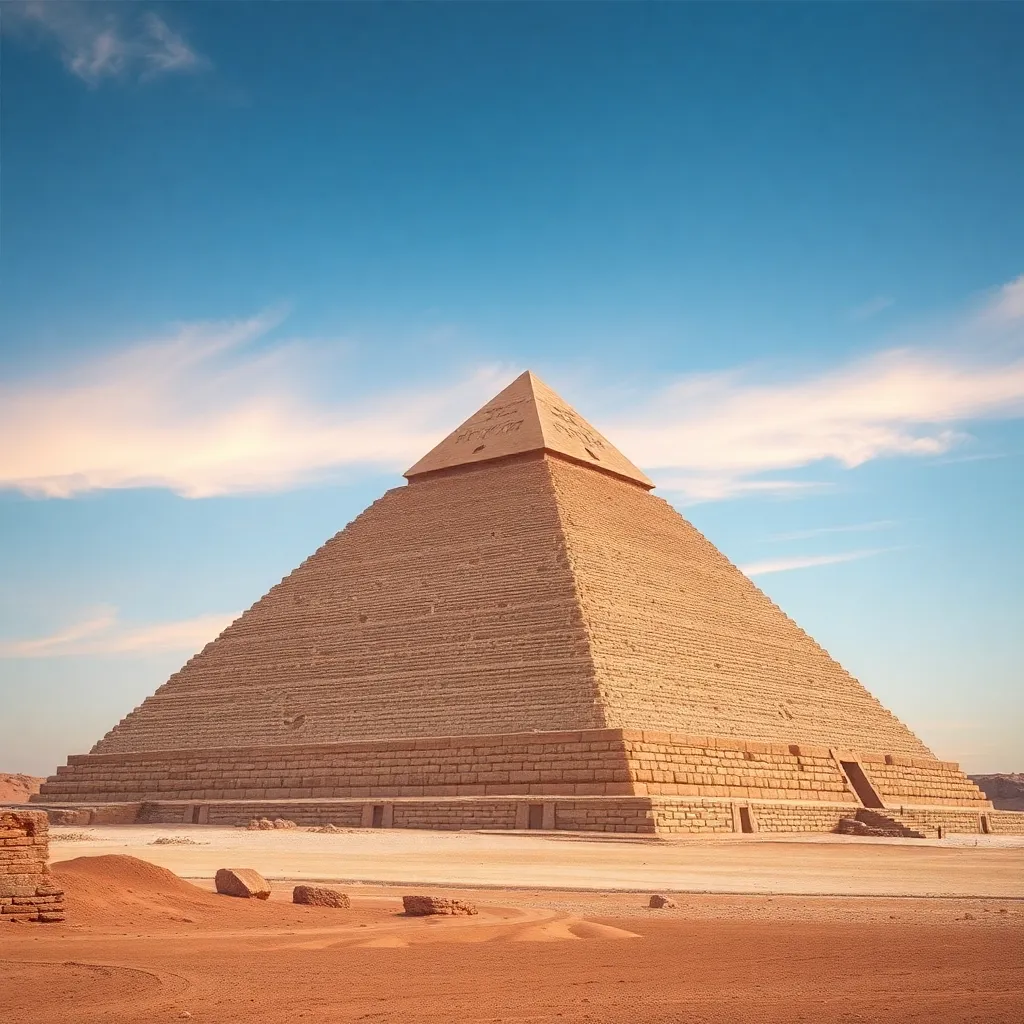The Pyramid of Mereruka: Insights into the Elite
I. Introduction
The Pyramid of Mereruka stands as a testament to the grandeur and complexity of ancient Egyptian civilization. Located in the Saqqara necropolis, it served as the final resting place for Mereruka, a high-ranking official during the Fifth Dynasty of the Old Kingdom. This pyramid not only reflects the architectural prowess of the time but also offers profound insights into the elite class of ancient Egyptian society.
The significance of the Pyramid of Mereruka extends beyond its physical structure; it provides a glimpse into the social hierarchy, religious beliefs, and cultural practices of the era. This article aims to explore the insights gleaned from the pyramid, delving into the life of Mereruka and the broader context of elite society in ancient Egypt.
II. Historical Context
The Pyramid of Mereruka was constructed during the Fifth Dynasty, approximately around 2400 BCE, in Saqqara, a prominent burial site for the ancient Egyptians. This period was marked by significant developments in architecture, art, and the centralization of power within the pharaoh’s administration.
The Fifth Dynasty is notable for its emphasis on the sun god Ra, with numerous pyramids dedicated to the worship of solar deities. Mereruka, serving as the vizier, was a pivotal figure in this period, holding a position that granted him substantial influence and responsibility. His pyramid reflects both his status and the importance of the elite in maintaining the social and religious structures of ancient Egypt.
III. Architectural Features of the Pyramid
The design of the Pyramid of Mereruka is characteristic of the Fifth Dynasty, featuring a stepped structure that leads to a small burial chamber. The pyramid complex includes several chapels and a mortuary temple, which were integral to the burial practices of the time.
- Design and Structure: The pyramid showcases a rectangular base, with a slope that ascends to a height of about 7 meters. The inner chambers are adorned with intricate carvings and inscriptions.
- Comparison with Other Pyramids: Unlike the more famous pyramids of Giza, Mereruka’s pyramid is smaller but exhibits unique features such as its decorative motifs and layout.
- Innovations in Construction Techniques: The use of limestone and mudbrick in its construction demonstrates advancements in building methods that allowed for more complex designs.
IV. Mereruka: Life and Legacy
Mereruka was a prominent figure in ancient Egyptian society, holding multiple titles including Overseer of the Royal Seal and Great One of the House of the Pharaoh. His life reflects the privileges and responsibilities bestowed upon the elite.
His contributions to the state were significant, as he played a vital role in the administration and governance of Egypt during a transformative period. Moreover, Mereruka’s influence extended into religious practices, as he was responsible for facilitating the worship of the gods and ensuring the favor of the pharaoh.
V. Artistic Representations and Inscriptions
Inside the Pyramid of Mereruka, wall paintings and carvings depict various scenes from daily life, religious rituals, and offerings to the gods. These artistic representations serve as a window into the beliefs and practices of the elite.
- Analysis of Wall Paintings: The vibrant colors and intricate details reflect the skill of ancient artisans and the importance of the afterlife in elite culture.
- Symbolism and Themes: Common themes include fertility, abundance, and the afterlife, emphasizing the elite’s desire for immortality and prosperity.
- Insights into Daily Life: The depictions offer glimpses into the lifestyle of the elite, highlighting their wealth, status, and connection to the divine.
VI. Funerary Practices and Beliefs
The burial customs associated with Mereruka are indicative of the beliefs held by the elite regarding the afterlife. His pyramid included provisions for offerings and rituals designed to ensure his safe passage to the next world.
- Significance of the Afterlife: For the elite, the afterlife was a continuation of their earthly existence, necessitating elaborate preparations and offerings.
- Comparison with Commoner Traditions: In contrast to the elaborate practices of the elite, commoners often had simpler burial rites, reflecting the socio-economic divides of ancient Egyptian society.
VII. Archaeological Discoveries and Research
Archaeological excavations at the Pyramid of Mereruka have uncovered a wealth of artifacts and information about elite society. Key findings include:
- Artifacts: Tools, pottery, and decorative items that shed light on the daily life and rituals of the elite.
- Recent Excavations: Ongoing research continues to reveal new insights into the pyramid’s construction and the cultural significance of its features.
- Challenges Faced by Archaeologists: The preservation of the site and the interpretation of artifacts can be complex, requiring careful analysis and innovative techniques.
VIII. Conclusion
The Pyramid of Mereruka offers invaluable insights into the elite of ancient Egypt, illustrating their social status, religious beliefs, and cultural practices. Through the exploration of this pyramid, we gain a deeper understanding of the complexities of ancient Egyptian society and the pivotal role that elite figures played in its development.
As research continues, it is crucial to reflect on the importance of these elite figures in shaping historical narratives and cultural legacies. Future research directions may include more in-depth studies of the artifacts found, further excavation of the site, and comparative studies with other elite burial sites across Egypt, all of which promise to enhance our understanding of this fascinating civilization.




